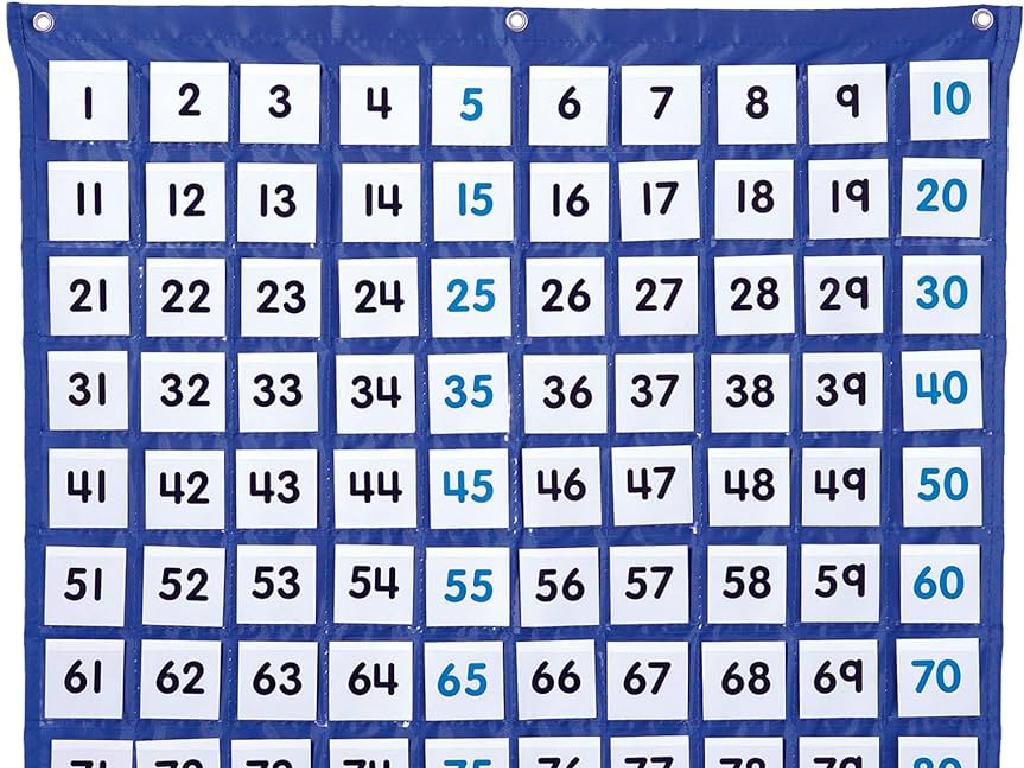Identify Proportional Relationships By Graphing
Subject: Math
Grade: Sixth grade
Topic: Proportional Relationships
Please LOG IN to download the presentation. Access is available to registered users only.
View More Content
Welcome to Proportional Relationships!
– Define proportional relationships
– A proportional relationship is two quantities maintaining a constant ratio.
– Proportionality in daily life
– Examples: recipes in cooking, buying fruits by the pound.
– Why learn proportions?
– Understanding proportions is key for solving real-world problems.
– Graphing proportions
– Use a graph to visualize and identify proportional relationships easily.
|
This slide introduces the concept of proportional relationships, a fundamental aspect of mathematics that students will encounter in various real-world situations. Begin by defining proportional relationships, emphasizing the constant ratio between two quantities. Provide relatable examples such as following a recipe or purchasing fruits by weight to illustrate how proportionality is present in everyday life. Highlight the importance of learning about proportions, as it helps in making informed decisions and solving practical problems. Finally, introduce graphing as a tool to represent proportional relationships visually, which aids in better understanding and identification of these relationships. Encourage students to think of other areas where they have seen proportions at work and to be prepared to explore graphing in more detail.
Understanding Proportions
– Define a proportion
A proportion is an equation stating two ratios are equal.
– Proportions in daily life
For example, recipe adjustments or map scales.
– Relation of ratios to proportions
If two ratios are equal, they form a proportion.
– Graphing to identify proportions
|
Begin by defining proportion as an equation that shows two ratios are equivalent. Use relatable examples such as recipe adjustments (if a recipe for 4 people is doubled for 8, the ratio of ingredients remains the same) or map scales (1 inch represents 1 mile) to illustrate proportions in real life. Explain that ratios are comparisons of two quantities and when they are set equal, they form a proportion. Highlight the importance of understanding proportions in various fields like cooking, map reading, and science. Introduce graphing as a visual method to identify proportional relationships, where the graph of a proportional relationship is a straight line that passes through the origin. This concept will be further explored in subsequent slides.
Graphing Proportional Relationships
– Review the coordinate plane
– A flat surface with two number lines: horizontal (x-axis) and vertical (y-axis)
– Practice plotting points
– Find a point’s location using ordered pairs (x, y)
– Learn about the x-axis and y-axis
– x-axis runs left-right, y-axis runs up-down
– Recognize proportional relationships
– Straight lines through the origin (0,0) show proportionality
|
Begin with a review of the coordinate plane, ensuring students recall the basics of the x-axis and y-axis. Emphasize that the coordinate plane is a tool for graphing and understanding relationships between numbers. Practice plotting points by providing students with ordered pairs and having them locate the points on the graph. Explain how the x-axis is horizontal and the y-axis is vertical, and how every point on the graph is defined by its distance from these axes. Introduce the concept of proportional relationships by explaining that when two variables are proportional, their relationship can be represented by a straight line that passes through the origin. Provide examples of proportional relationships and plot them on the graph to illustrate the concept. Encourage students to ask questions and offer to plot additional points if they need more practice.
Graphing Proportional Relationships
– Defining proportionality
– A relationship with a constant ratio or rate
– Traits of proportional graphs
– Straight line through the origin (0,0)
– Proportional vs. non-proportional
– Compare graphs to spot constant ratios
– Graph interpretation practice
|
This slide introduces students to the concept of proportional relationships in graphing. Begin by defining proportionality as a consistent ratio between two quantities. Explain that proportional graphs have specific characteristics, such as being a straight line that passes through the origin. Show examples of both proportional and non-proportional graphs, highlighting the differences. Encourage students to look for a constant rate of change in proportional graphs. Conclude with an activity where students interpret various graphs to determine if they represent proportional relationships, reinforcing their understanding of the concept.
Graphing Proportional Relationships
– Plotting proportional relationships
– Use ordered pairs to represent the relationship on a graph.
– Utilizing value tables for graphs
– Create a table with input-output pairs to plot points.
– Finding the constant of proportionality
– The constant ratio between variables, seen as the slope on the graph.
– Interpreting graphs for proportionality
– Look for a straight line through the origin to confirm proportionality.
|
This slide introduces students to the concept of graphing proportional relationships in mathematics. Start by explaining that a proportional relationship is one where two quantities increase or decrease at the same rate. Show how to create a table of values with inputs and corresponding outputs, and then use these ordered pairs to plot points on a graph. Emphasize the importance of the constant of proportionality, which is the ratio between the two quantities and is represented by the slope of the line in the graph. Ensure students understand that a graph of a proportional relationship will be a straight line that passes through the origin (0,0). Provide examples and practice problems for students to solidify their understanding.
Real-World Proportions: Graphing in Action
– Apply graphing to real-life scenarios
– Find the constant of proportionality
– The constant ratio between two quantities, e.g., speed = distance/time
– Interpret the constant’s meaning
– Understand how the constant guides the relationship, like speed affecting travel time
– Proportions in different careers
|
This slide aims to show students how the graphing skills they learn in class can be applied to solve real-world problems. Emphasize the importance of the constant of proportionality, which is the unchanging value that relates two variables in a proportional relationship. Use practical examples, such as calculating speed in a travel scenario, to illustrate how this constant is found and used. Discuss how various professionals, like chefs, architects, and scientists, use proportional relationships in their work. Encourage students to think of other examples where proportions are essential. This will help them understand the relevance of math in everyday life and various career paths.
Class Activity: Graphing Proportions
– Receive a worksheet with ratios
– Graph the ratios individually
– Plot the given ratios on the graph paper
– Review graphs as a class
– We’ll look at everyone’s graphs on the board
– Discuss findings together
– Share what you’ve learned about the ratios
|
This activity is designed to provide hands-on experience with graphing proportional relationships. Each student will be given a worksheet containing different ratios that they will graph on coordinate planes. This will help them visualize how ratios translate into graphs and understand the concept of proportionality. After graphing, we’ll review the graphs together, allowing students to see variations and discuss any discrepancies. Encourage students to explain how they determined the points to plot and what patterns they notice. Possible activities include graphing savings over time, distance versus time for a trip, or ingredients in a recipe. This will solidify their understanding of proportional relationships in real-world contexts.
Wrapping Up: Proportional Relationships
– Recap of proportional relationships
– Remember, a proportional relationship means two quantities increase at the same rate.
– Homework: Graphing practice
– Complete the worksheet to reinforce today’s lesson.
– Next class: Complex graphs
– We’ll tackle more challenging graphs next time.
– Keep practicing!
|
As we conclude today’s lesson, ensure students have a solid understanding of the basics of proportional relationships. For homework, they should use the worksheet to practice graphing these relationships, which will help solidify their comprehension. Encourage them to look for patterns where one quantity changes at a constant rate relative to another. In the next class, we’ll build on this foundation by exploring more complex graphs, so it’s important for them to be comfortable with the concepts covered today. Remind them that practice is key to mastery, and to come prepared with any questions they might have for the next class.






